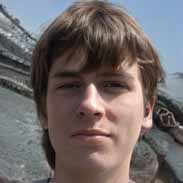bio exam chap 11 – Flashcards
Unlock all answers in this set
Unlock answersquestion
At one point, you were just an undifferentiated, single cell. You are now made of many cells; some of these cells function as liver cells, some as muscle cells, some as red blood cells, while others play different roles. What name is given to the process that is responsible for this?
answer
D) cellular differentiation
question
2) The process by which genotype becomes expressed as phenotype is ______.
answer
C) gene expression
question
3) In bacteria, what name is given to a cluster of genes with related functions, along with their DNA control sequences?
answer
A) operon
question
4) Bacterial RNA polymerase binds to the ______.
answer
D) promoter
question
5) In prokaryotes, the production of a single RNA transcript for a group of related genes is under the control of the ______.
answer
A) operon
question
6) In an operon, the ______ acts as an on/off switch.
answer
A) operator
question
7) Which of the following turns off transcription by binding to the operator?
answer
B) repressor
question
8) Repressors act by blocking the binding of _____ to the operator.
answer
D) RNA polymerase
question
9) What would you assume if you found RNA transcripts of lactose-utilizing genes within E. coli?
answer
B) the presence of lactose
question
10) While examining a human cell that functions normally, you determine that it has 45 functional chromosomes and one chromosome that is almost completely inactive. You immediately decide that it is very likely that this cell ______.
answer
A) came from a normal human female
question
11) What is the first level of control of eukaryotic gene transcription?
answer
C) DNA packing and unpacking
question
12) Male tortoiseshell cats ______.
answer
D) are likely to be exceedingly rare and very likely to be sterile since normal male cats are XY
question
13) Which of these plays a role in the regulation of transcription in both prokaryotic and eukaryotic cells?
answer
B) attachment of RNA polymerase to the promoter
question
14) In eukaryotic cells, repressor proteins inhibit transcription by binding to ______.
answer
A) silencers
question
15) Introns are ______.
answer
A) noncoding DNA sequences
question
16) Which of these is a type of post-transcriptional regulation of gene expression?
answer
C) alteration of proteins
question
17) How can a single RNA transcript be translated into different polypeptides?
answer
A) There is more than one way to splice an RNA transcript.
question
18) Cells communicate with one another via ______.
answer
C) signal transduction pathways
question
19) The "master control genes" that regulate other genes, which determine what body parts will develop in which locations, are called ______.
answer
B) homeotic genes
question
20) Which of these is most likely to cause the development of a six-legged frog?
answer
A) mutation of homeotic genes
question
21) Homeotic genes ______.
answer
C) are evidence of the common ancestry of eukaryotic organisms
question
22) Which of these techniques could tell you how gene expression differs between individuals with and without cystic fibrosis?
answer
B) DNA microarray
question
23) How is it that the cells in different body tissues are able to perform different functions?
answer
A) The cells exhibit different patterns of gene expression.
question
24) Reproductive cloning involves
answer
C) be dedifferentiated
question
25) Possible uses of reproductive cloning include ______.
answer
D) all of the above.
question
26) What is a difference between embryonic and adult stem cells?
answer
B) Embryonic stem cells are undifferentiated; adult stem cells are partially differentiated.
question
27) What name is given to a gene that causes cancer?
answer
D) oncogene
question
28) Many proto-oncogenes regulate ______.
answer
C) cell division
question
29) Inheritance of certain genes increases the risk of getting certain cancers; thus, it can be said that ______.
answer
C) predisposition to these cancers is inherited
question
30) Data suggest that the normal version of BRCA1 functions as a(n) ______.
answer
B) tumor-suppressor gene
question
31) Which risk factors are associated with cancer of the colon and rectum?
answer
D) dietary fat
question
32) ______ is(are) responsible for more cancers than any other carcinogen.
answer
C) Tobacco
question
33) More people die of ______ cancer than of any other cancer.
answer
A) lung
question
34) Which of these lifestyle choices will increase cancer risk?
answer
C) a diet low in plant fiber
question
1) Jim learned that some cancer cells produce more growth-stimulating proteins than others. What would you give him as a plausible explanation?
answer
B) Proto-oncogenes may have mutated to become oncogenes in these cells.
question
2) Jim learned that viruses can sometimes cause cancer and wants to know why. You tell him that ______.
answer
C) a human cell can acquire an oncogene from a virus.



